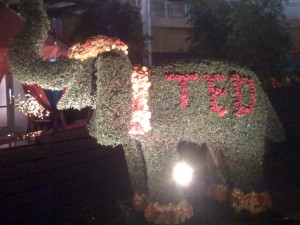TED Day 3 Roundup (#TED)
(Follow all of MIT Sloan Management Review’s coverage of TED.)
Where do new management ideas come from? At TED, they come from the most surprising sources. For example, yesterday there was a brief presentation (from the Palm Springs simulcast) by comic and actress Christen Sussin, who shared her four rules of improvisation:
- Say yes to everything.
- Follow and see where it goes.
- Make eye contact.
- Choose what you want to know.
She’s clearly talking about comedic improvisation, but at least some of those lessons seem to apply to management improvisation as well. And her first rule, about being open to everything, seems to be one of the best ways to generate new management ideas, too.
While it’s probably not healthy to consider everything in your life as the source of a new management idea, it’s fascinating how so many of the talks here have management implications if you consider them in a certain way. Architect Daniel Libeskind talked about how he tried to make his work expressive rather than neutral, unexpected rather than habitual, memorable rather than forgettable, communicative rather than mute, democratic rather than authoritarian. And Rosamund Zander, reading from an upcoming book about personal fulfillment, delivered some rules — “take responsibility for everything,” “embrace different patterns” — that are just as applicable in the office as at home.


That’s all for now. I’m about to step into a panel on a topic we covered in the most recent print issue of the magazine: predicting (see
